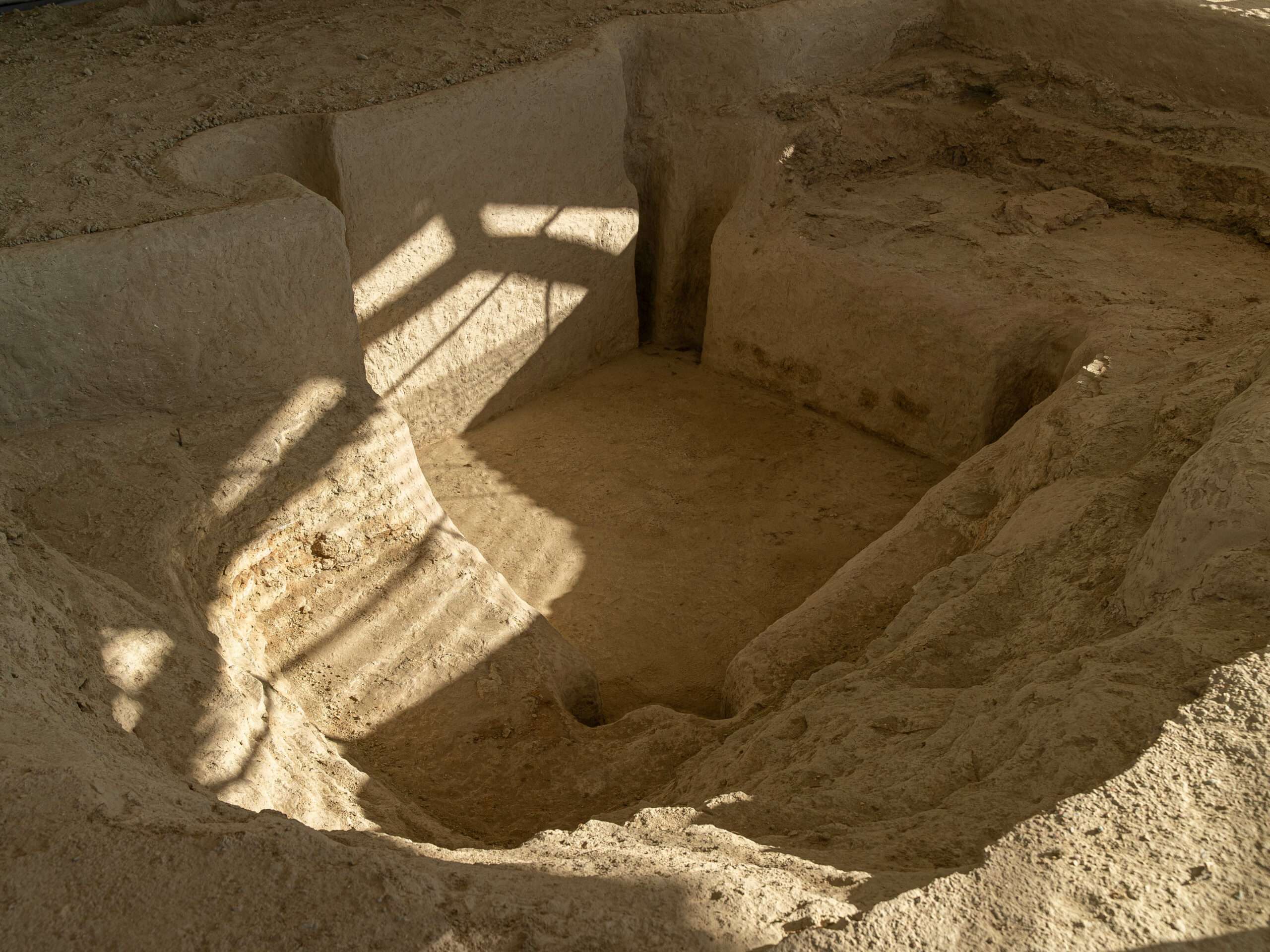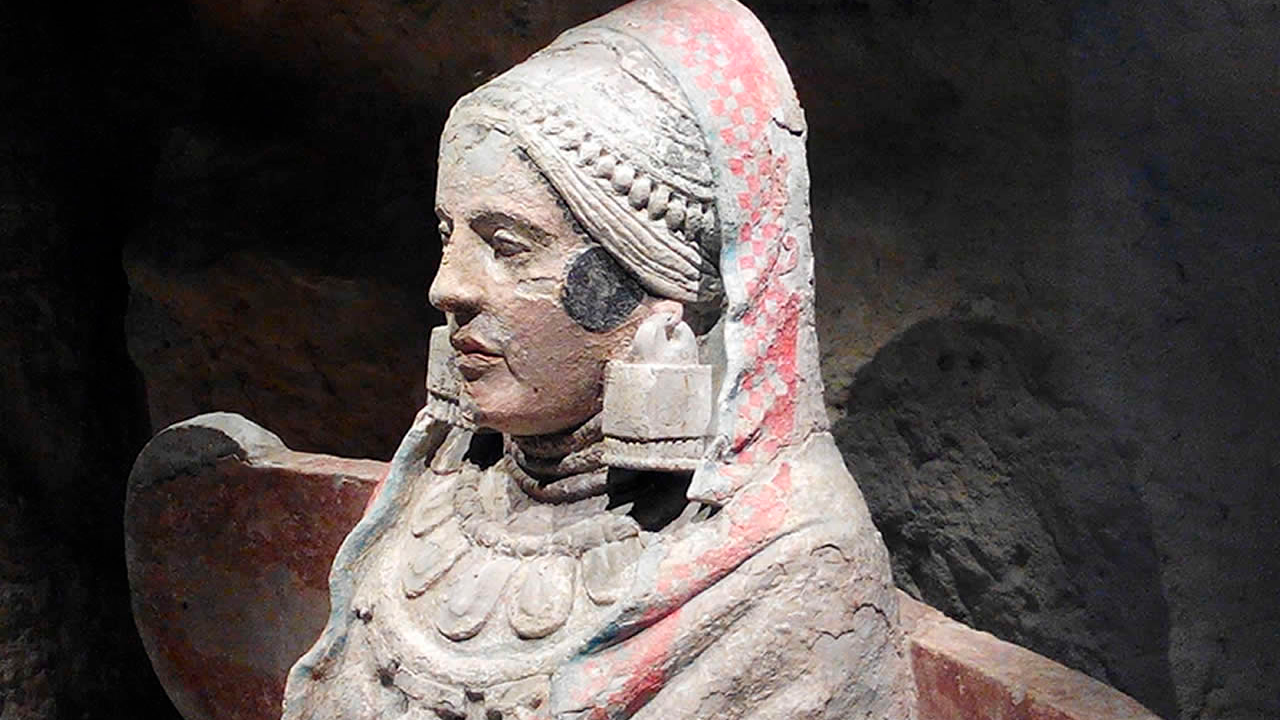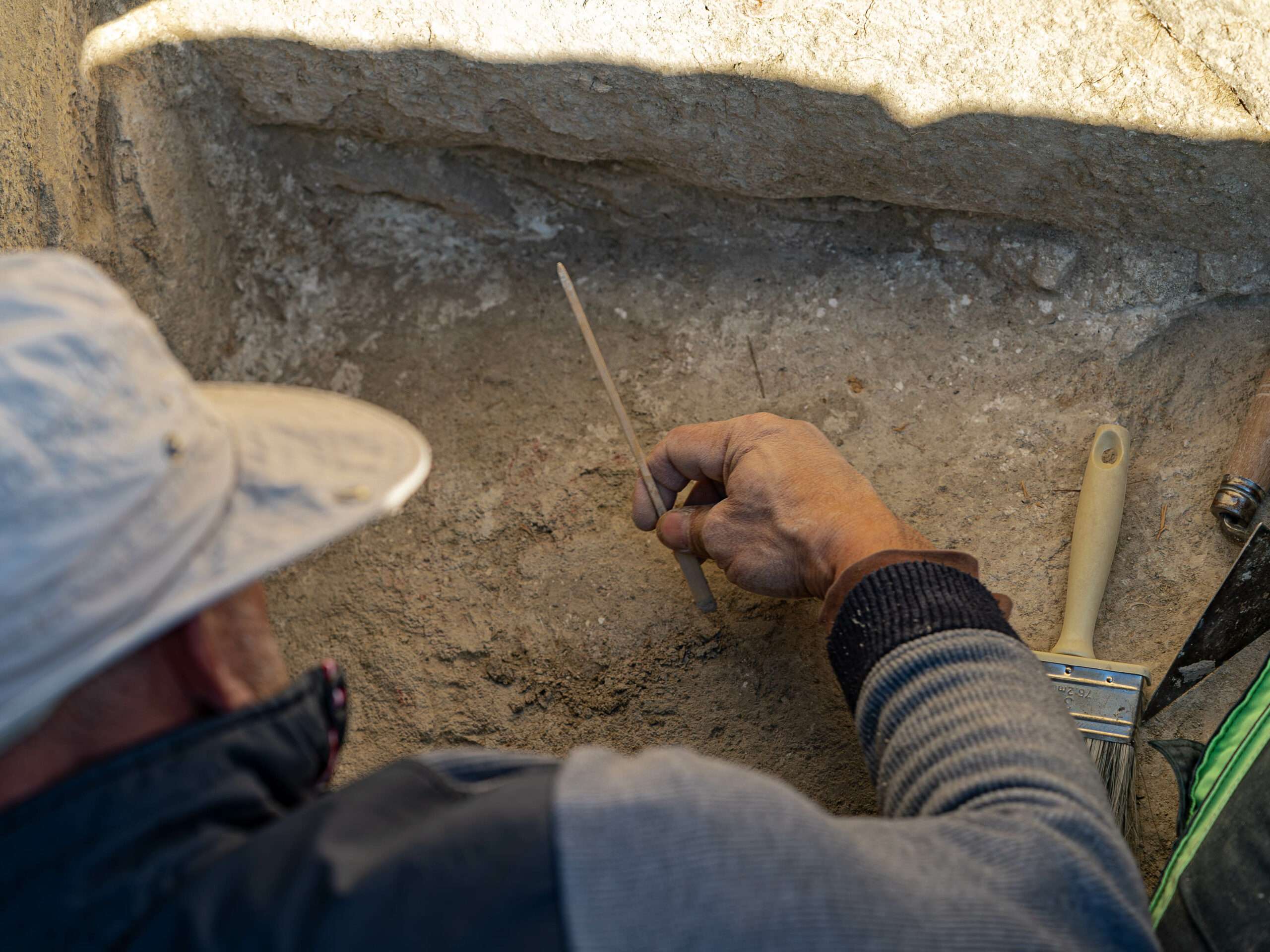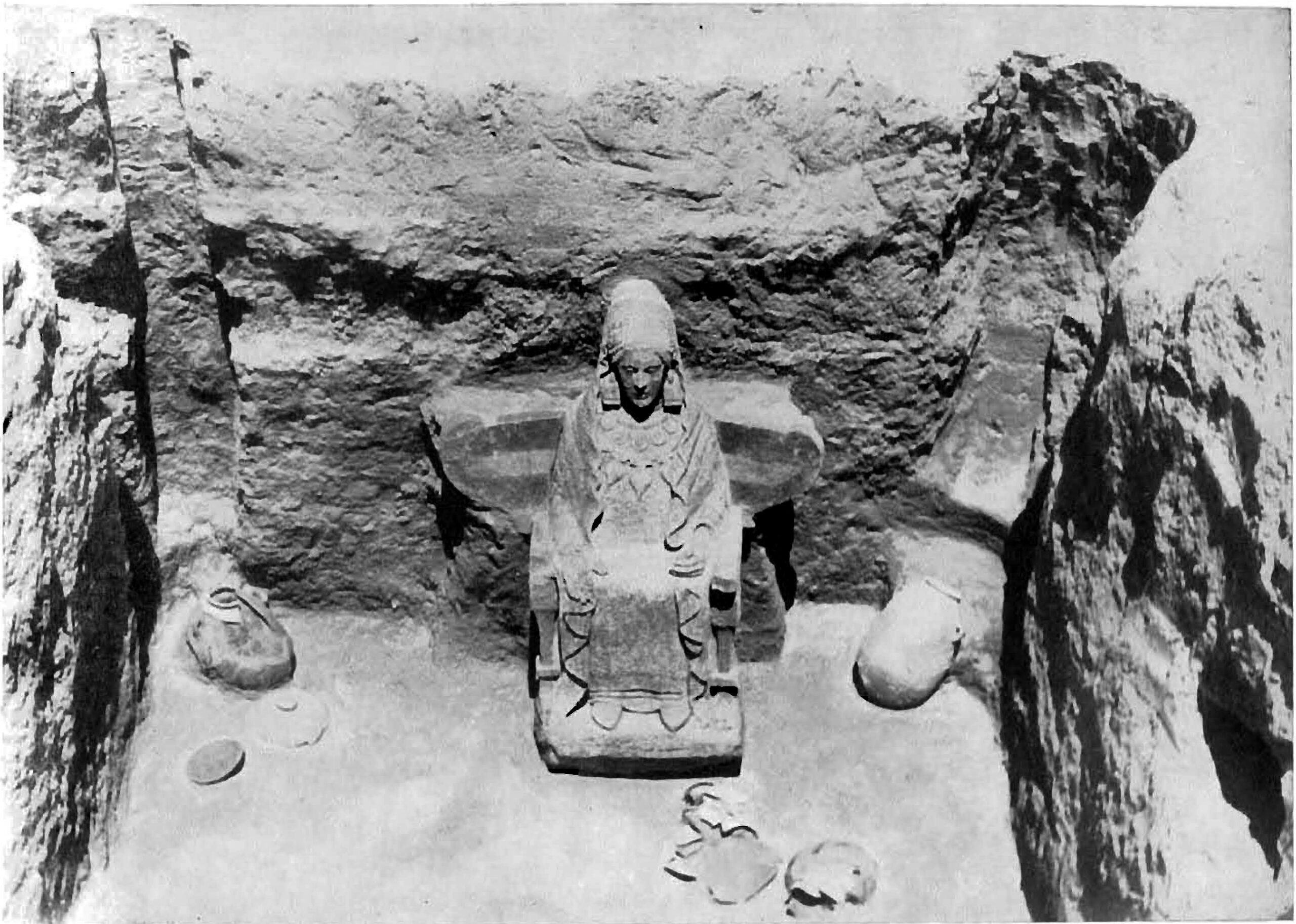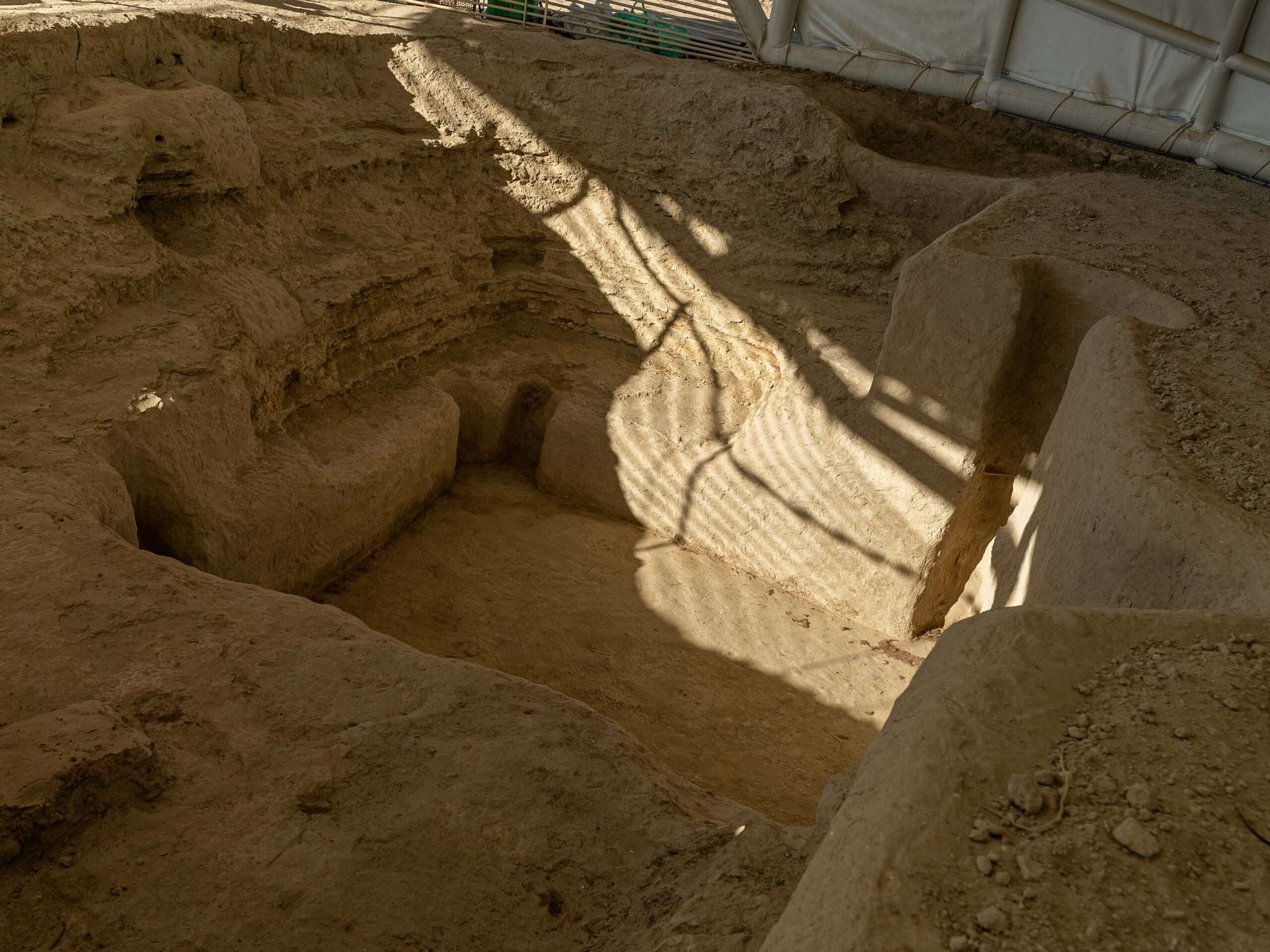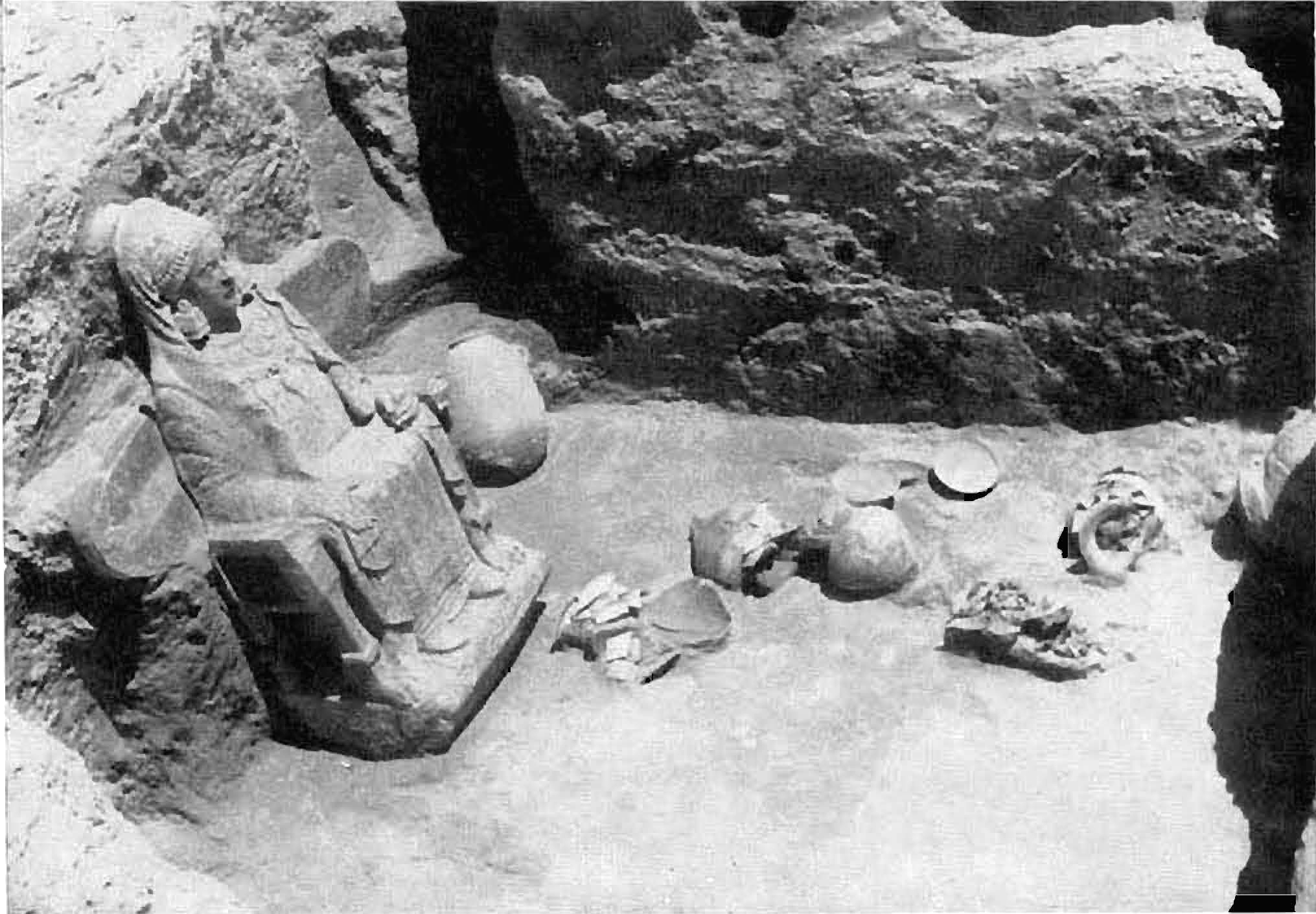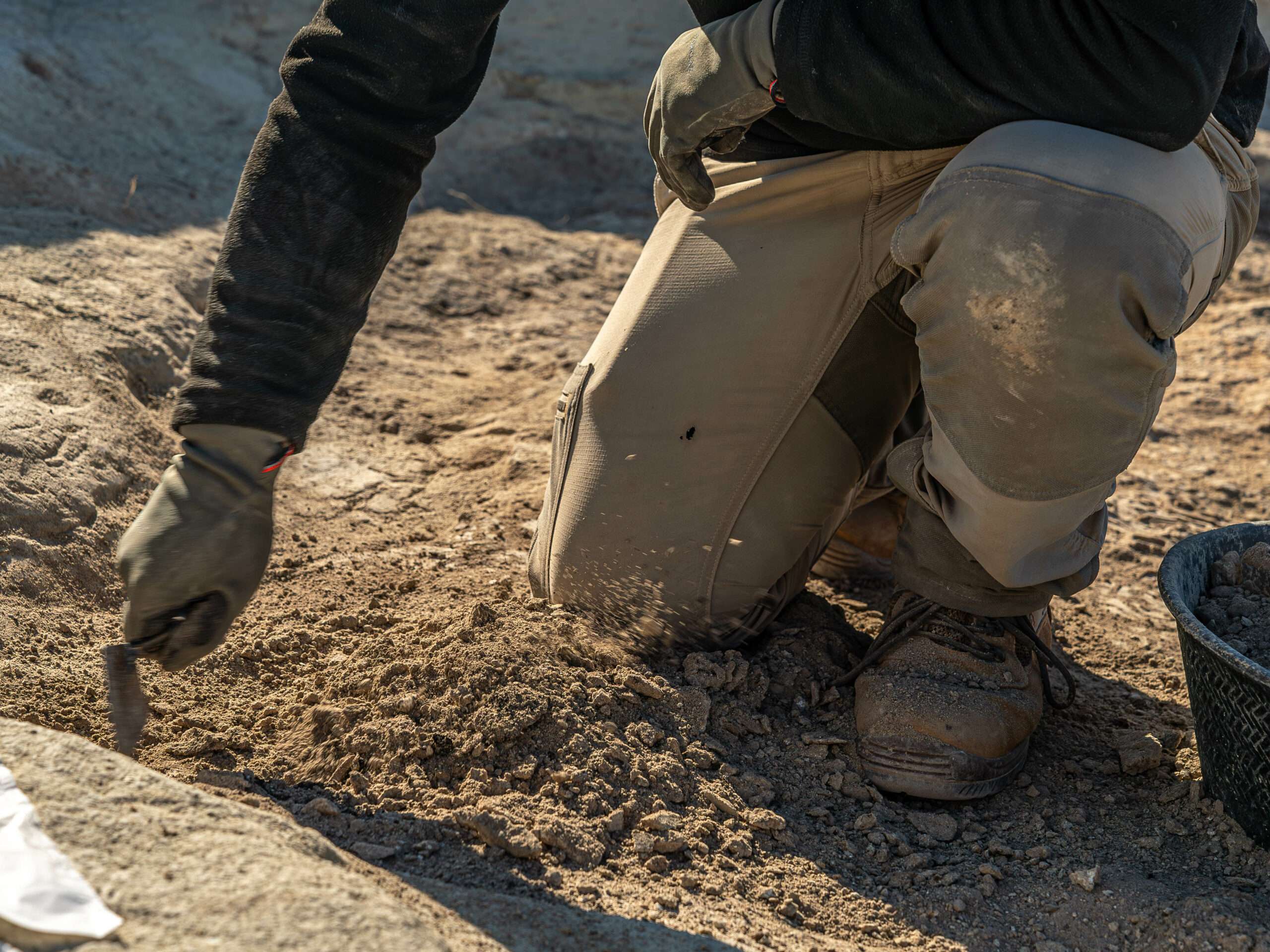TOMB 155
History of the tomb
La tumba de la Dama tiene una serie de particularidades. La primera, es que se trata de una tumba de cámara en la cual se enterró a un solo difunto, lo cual es infrecuente en esta necrópolis. La cámara estuvo forrada con un muro de adobe y tras este muro, conocemos ocho rozas verticales distribuidas por las esquinas de la cámara, que servían para introducir vigas verticales de madera, que sostenían algún tipo de techo.
El ajuar de la Dama tiene algunas características curiosas. Tenía 4 ánforas en cada una de las esquinas de la tumba, con una serie de urnas bastante particulares con unas decoraciones sin paralelo dentro del mundo Ibérico-bastetano y además, tenía una gran cantidad de armamento dentro de la tumba, acumulado justo en el centro de la cámara.
Para algunos investigadores esta acumulación de armamento que corresponde al equipamiento completo de 3 o 4 guerreros, puede responder a que en el momento del entierro, hubiera algún tipo de duelo incruento. Este tipo de duelos se basaban en una aristócrata. Al morir, hacen una serie de duelos rituales y las armas forman parte del ritual de enterramiento, que se amortizan dentro de la cámara. De la superestructura se sabe muy poco, pero en algunas fotos se puede apreciar que existió un pasillo de acceso en el lado norte.
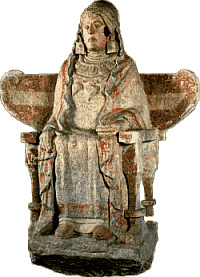
Did you know...?
For a long time, it was believed to represent a goddess or divine figure. However, some more recent interpretations suggest that she could be a representation of a woman of the Iberian aristocracy. Additionally, the Lady of Trick’s hands hold objects in the shape of a scepter and a type of box or container. These elements have led to speculation about her exact role: some think she could be a queen or a priestess who participated in religious rituals.
The presence of the Lady of Baza in a tomb also highlights her connection to funerary practices and the idea of life after death. These types of sculptures in funerary contexts often suggest a belief in the continuity of life after death.
The interpretation of the Lady of Baza remains a topic of debate among archaeologists and scholars, but her mysterious presence and the unanswered questions she raises make her a particularly intriguing archaeological piece.
– Necropolis: Large cemetery in which funeral monuments abound.
– Fusayola: Counterweight placed on the spinning spindle, also serving as a counterweight.
– Funeral pyre: It is a structure, usually made of wood, that is used for the burning of a body as part of the funeral rite.
– Adobe: Mass of mud sometimes mixed with straw, molded into a brick and dried in the air, used in the construction of walls or walls.
– Ustrinum: Pit where combustion activity has been found.
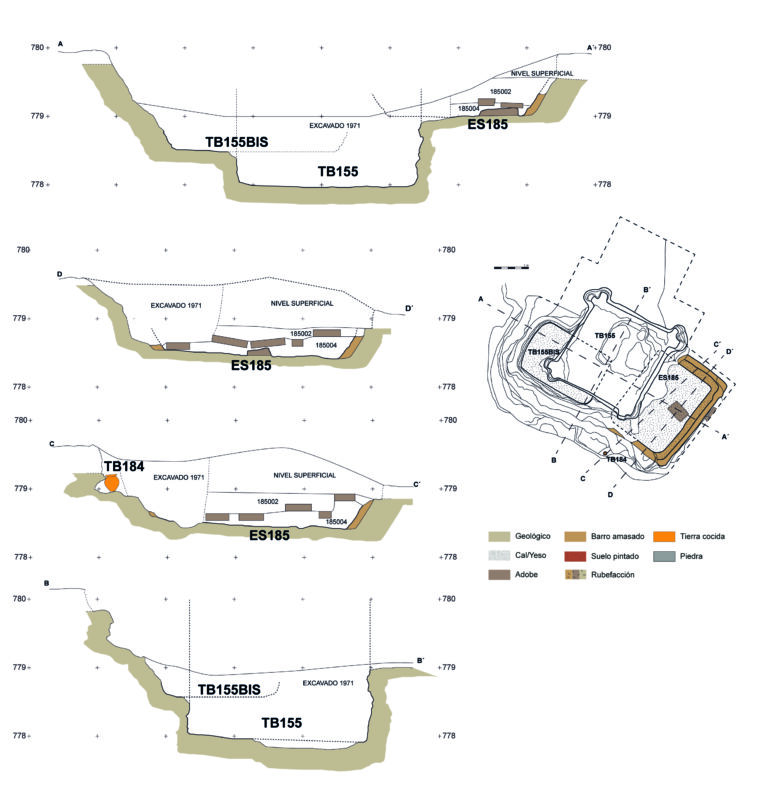
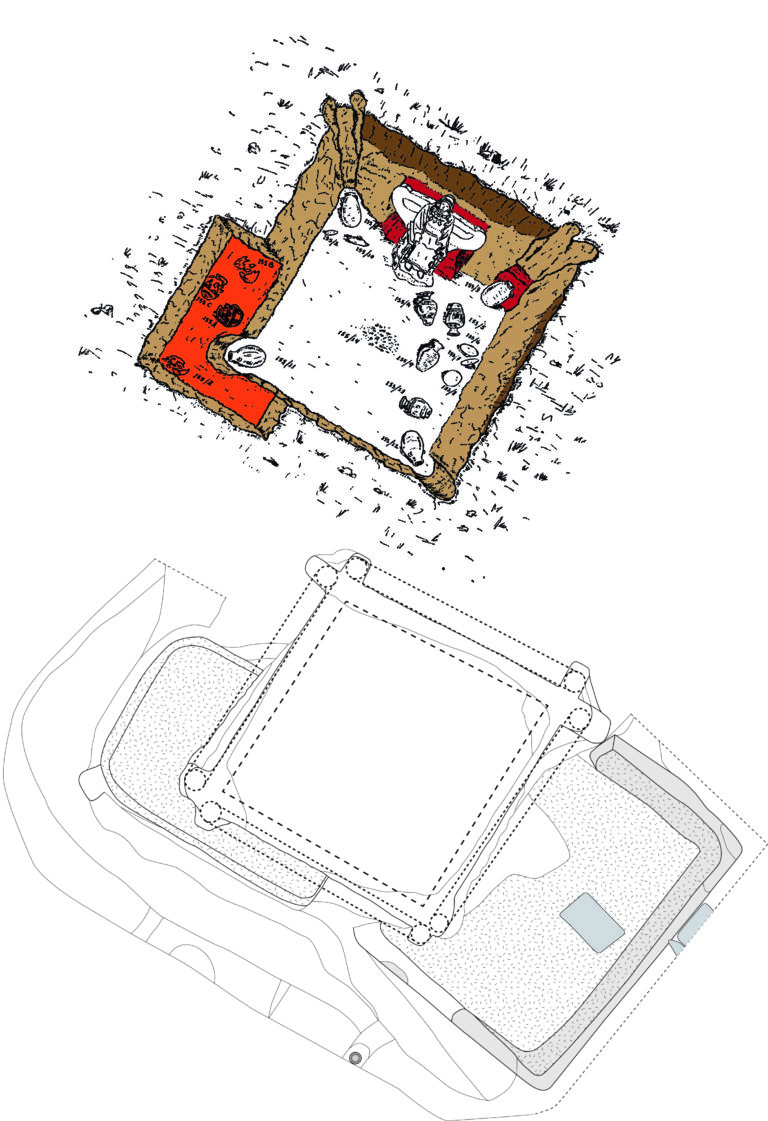
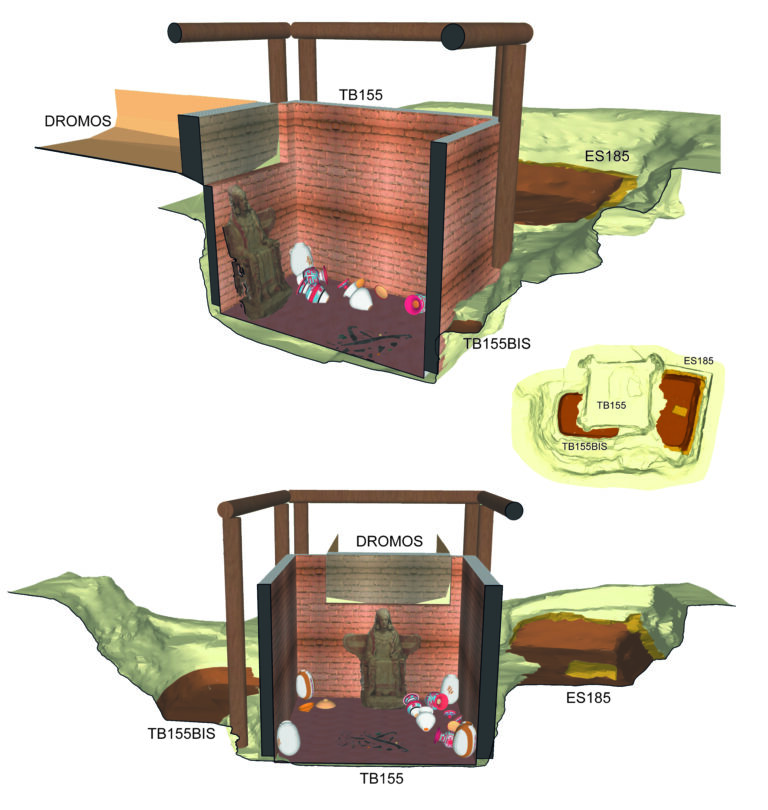
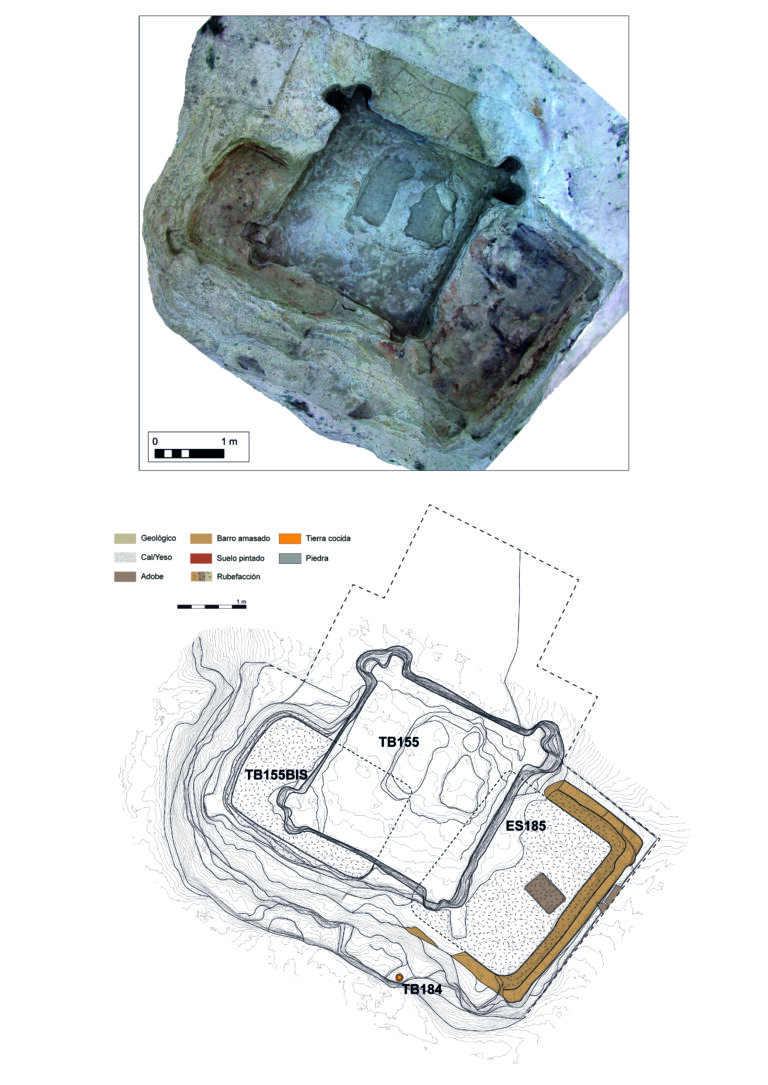
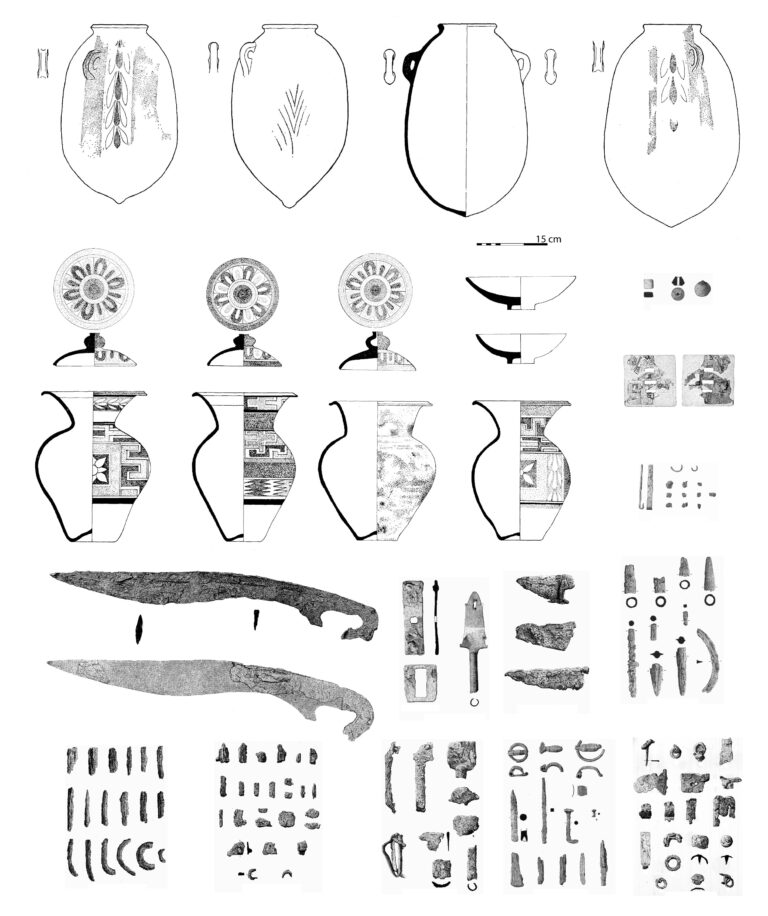
IMMERSION INTO HISTORY
In the Cerro Santuario necropolis we find different types of burial, among them, one of the most famous of the Iberian culture; tomb number 155 or also known as the tomb of the Lady of Baza.
It is a structure 2 meters wide by 2 meters high, in which very rich trousseaus were found, where the main element was the figure of the Lady of Baza. In this tomb, eight vertical scratches were found in the corners.
An ustrinum appears, which is a funeral pyre with the earth reddened by the fires that were there, where, in all probability, the body of the representative figure of the Lady of Baza was cremated.
This figure, almost in all likelihood, was among the highest ranks of the Bastetan aristocracy.
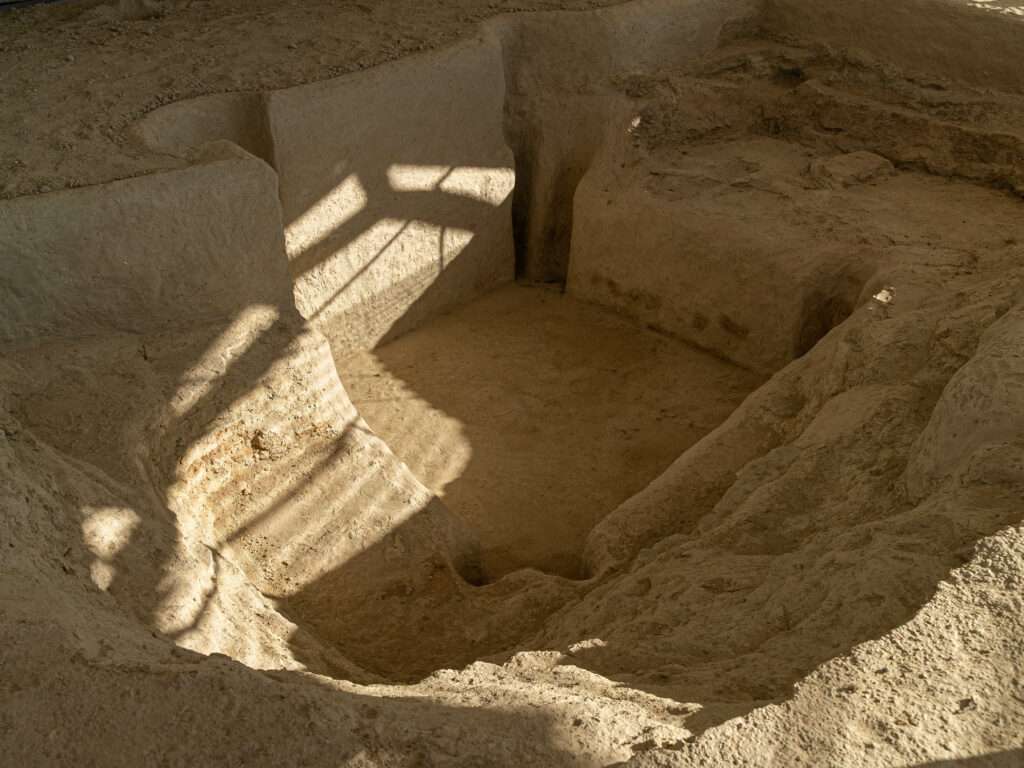
Perched on this wall, the representative statue of the Lady of Baza was found.
Large Ustrinum partially destroyed by tomb 155.
Tomb 155BIS. Small chamber tomb from the 5th century BC, partially destroyed by the construction of tomb 155.
GALLERY
